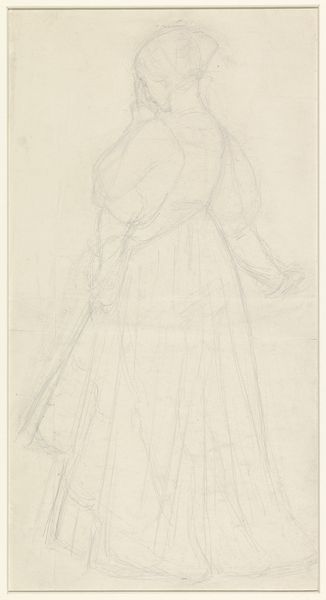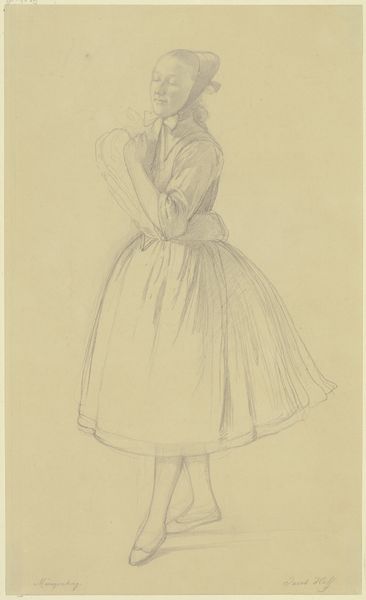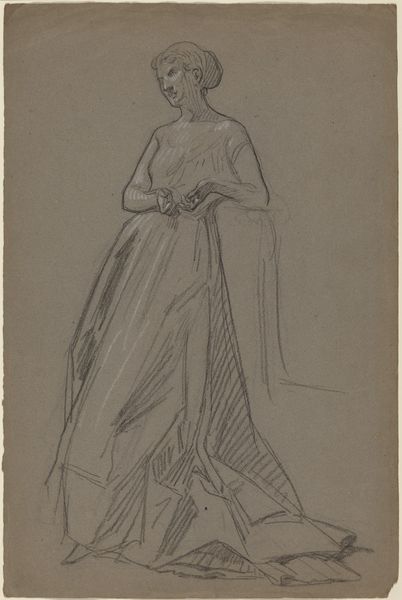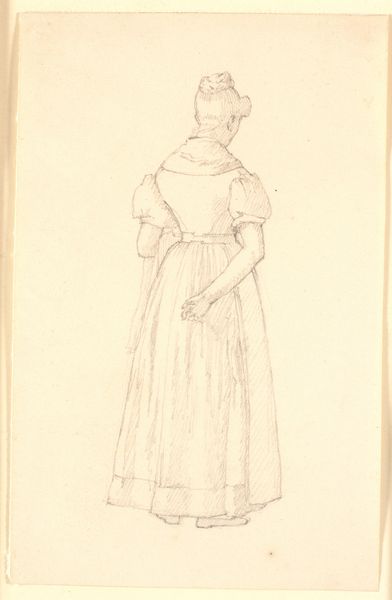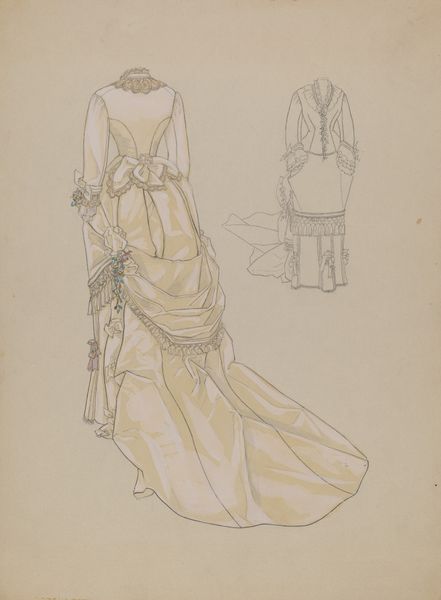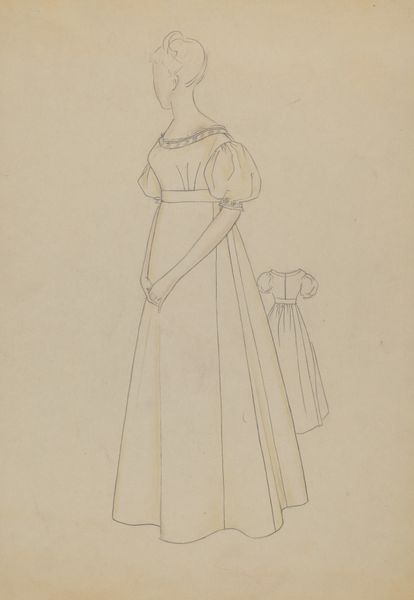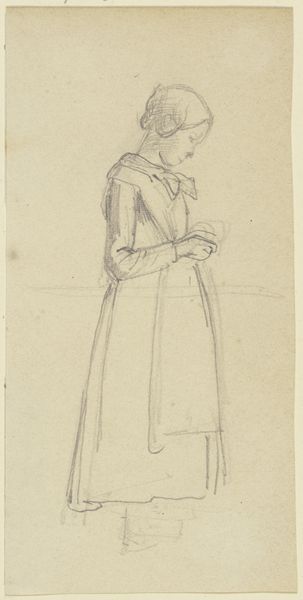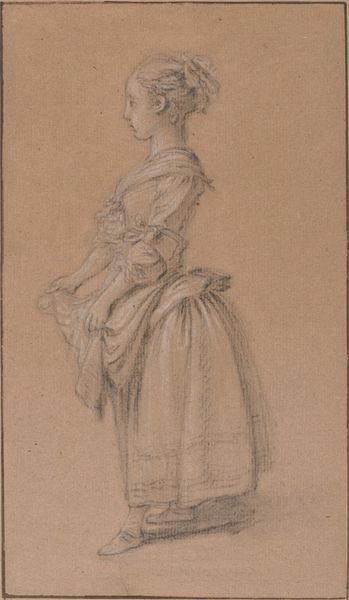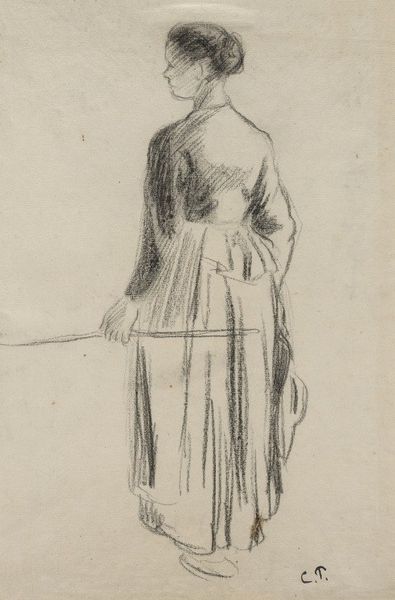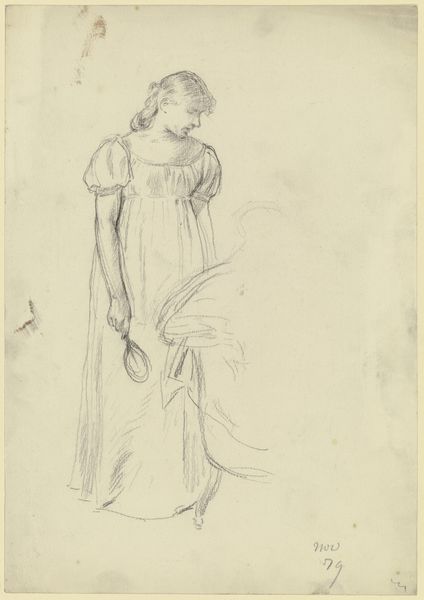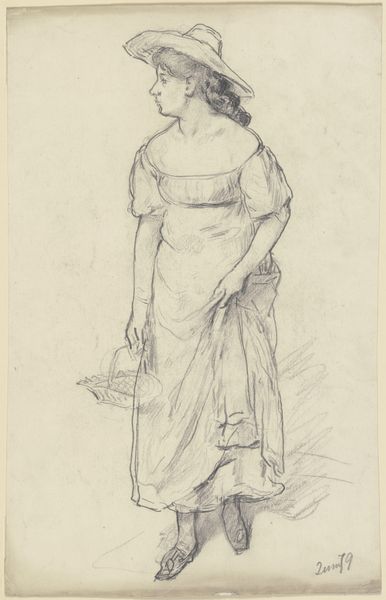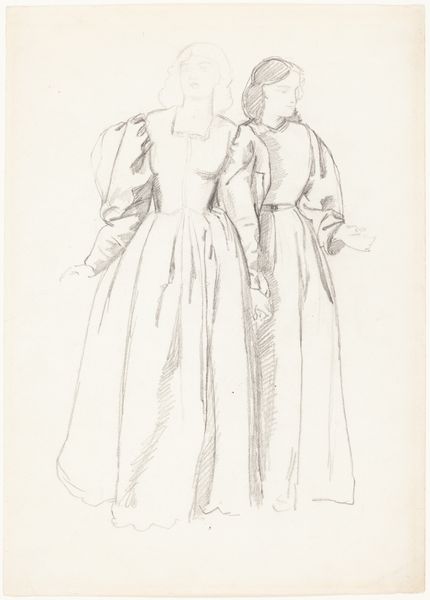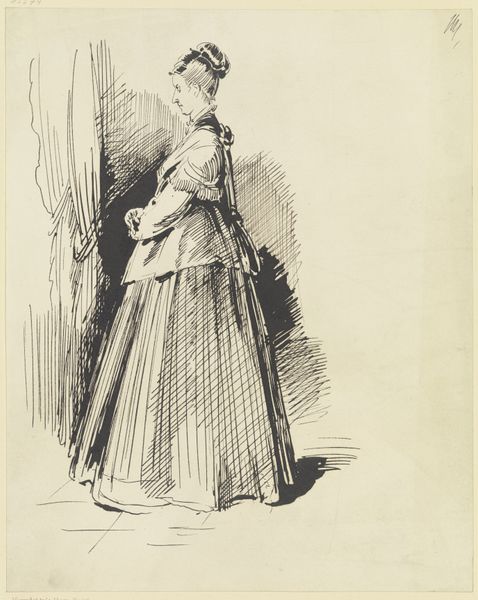
drawing, print, paper, pencil, graphite
#
portrait
#
drawing
# print
#
impressionism
#
figuration
#
paper
#
pencil drawing
#
pencil
#
graphite
Dimensions: 144 × 48 mm (image); 152 × 101 mm (plate); 156 × 101 mm (sheet)
Copyright: Public Domain
Theodore Roussel made this drypoint etching, “Portrait of Mrs. C.W.”, at the end of the 19th century. It embodies the visual codes of femininity in European society at that time. Made during the late Victorian era, this portrait reflects the influence of social class and gender roles on artistic production. The artist used line and shading to convey the sitter’s refined elegance. However, the lack of specific detail and absence of setting also suggest the limitations placed on women’s identities within the domestic sphere. This was the time of the Aesthetic Movement, which emphasized the appreciation of beauty and art for its own sake. Whistler and his circle, to which Roussel belonged, explored these ideas, often challenging the prevailing academic standards of the British art establishment. To understand this image better, one needs to consider the social and cultural context in which it was created. By exploring resources such as period magazines, literature, and social histories, we can gain a deeper understanding of how the artist was both reflecting and commenting on the social structures of his time.
Comments
No comments
Be the first to comment and join the conversation on the ultimate creative platform.
